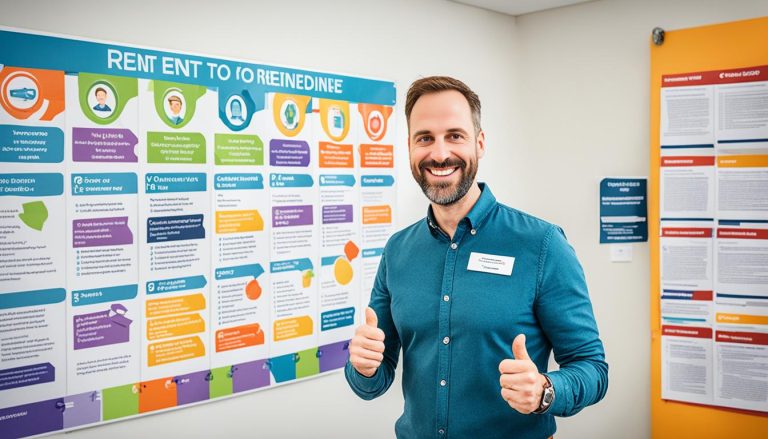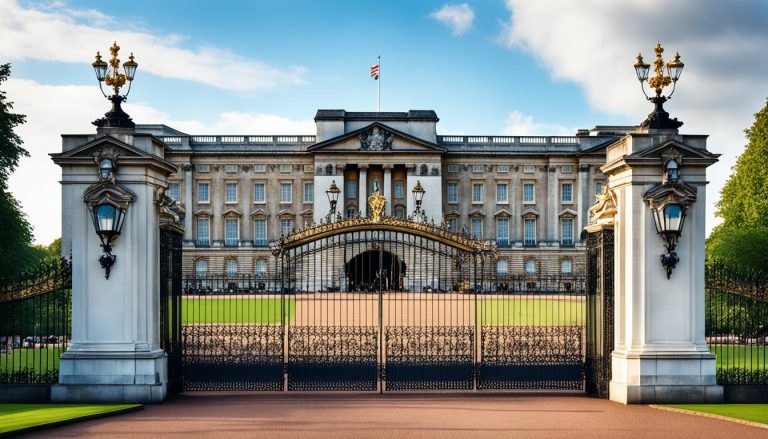For many first-time buyers in the UK, the biggest hurdle to homeownership is the initial deposit. With property prices continuing to rise, saving for even a 5% deposit can seem like an insurmountable task.
However, the idea of buying a house with no money upfront is not as impossible as it may seem. Thanks to no deposit mortgages, government schemes, and creative financing options, it’s possible to purchase a property even if you don’t have significant savings.
In this guide, I’ll walk you through the strategies and tips for how to buy a house with no money, ensuring that you can step onto the property ladder sooner than you think.
What Does Buying a House With No Money Mean?

When discussing the concept of buying a house with “no money,” we’re primarily referring to purchasing a property without a deposit. A deposit typically accounts for 5% to 20% of a home’s total value, which can be a significant amount to save, especially for first-time buyers.
However, there are financing options that allow you to bypass the need for a deposit. These include 100% mortgages, also known as no deposit mortgages, as well as government housing schemes that offer financial assistance or shared ownership opportunities. The concept of “no money” doesn’t mean you won’t have any financial obligations; rather, it means you can avoid the large upfront costs that usually come with buying a home.
For example, some options like property crowdfunding allow you to invest in property without needing to provide a traditional deposit, making real estate investment accessible to people with limited capital.
Explore No Deposit Mortgages
A no deposit mortgage allows you to borrow the entire purchase price of a property, meaning you don’t need to put down any of your own money upfront. These were more common before the financial crisis of 2008 but have become rarer in recent years due to stricter lending criteria.
However, some lenders in the UK still offer no deposit or 100% mortgages, especially to first-time buyers who meet specific criteria.
Types of No Deposit Mortgages

When looking to buy a house with no deposit, it’s crucial to understand the different types of no deposit mortgages available. While 100% mortgages (where you borrow the entire purchase price of a property) are not as common as they once were, there are still a few options that allow buyers to secure a home without a deposit. Here’s a breakdown of the main types:
1. Guarantor Mortgages
A guarantor mortgage is one of the most widely available no deposit mortgage options. In this scenario, a close relative or family member acts as a guarantor for the loan. This means they agree to cover your mortgage payments if you’re unable to keep up with them. The guarantor uses their own home or savings as collateral, reducing the lender’s risk and allowing you to secure a mortgage without a deposit.
- How it works: The guarantor’s assets (usually their home or savings) are placed as security for the mortgage, either for the entire loan or until a portion of the mortgage is repaid.
- Who it’s for: Guarantor mortgages are often targeted at first-time buyers who may not have had time to save for a deposit but have a reliable support network.
- Risks: If you fail to make payments, your guarantor’s property or savings could be at risk. This option requires trust and careful consideration.
2. Family Offset Mortgages
A family offset mortgage works by using a family member’s savings to offset the mortgage balance, effectively reducing the amount of interest paid. The family member deposits their savings into a linked account with the mortgage lender, which is then offset against the loan, reducing the amount of interest you pay. While the savings are being used to offset your mortgage, the family member cannot access them.
- How it works: The family’s savings reduce the interest calculated on your mortgage. For example, if you’re borrowing £200,000 and your family member deposits £50,000 into the linked savings account, you only pay interest on £150,000.
- Who it’s for: Ideal for buyers who don’t have a deposit but have family members with substantial savings.
- Risks: The family member’s savings are locked away for the duration of the arrangement, and they will not earn interest on those savings. However, they can help you avoid needing a deposit, and you benefit from lower interest payments.
3. Joint Borrower Sole Proprietor (JBSP) Mortgages
A Joint Borrower Sole Proprietor (JBSP) mortgage allows multiple people, such as family members, to apply for a mortgage together, combining their income to increase the loan amount.
However, unlike traditional joint mortgages, only one person (the buyer) is listed as the legal owner of the property. This allows the buyer to qualify for first-time buyer schemes and tax reliefs, such as avoiding Stamp Duty for first-time buyers.
- How it works: Family members or friends combine their incomes to strengthen the mortgage application. Only the buyer is listed on the property deeds, allowing them to take advantage of first-time buyer benefits.
- Who it’s for: This is particularly useful for younger buyers or those with lower incomes who want to take advantage of family support without having their relatives co-own the property.
- Risks: All parties are liable for the mortgage, so if the buyer cannot make the payments, the responsibility falls on the other applicants.
4. Professional Mortgages (for certain careers)
Some lenders offer professional mortgages that require little or no deposit for individuals in certain professions, such as doctors, solicitors, or accountants. These mortgages are available to people with high earning potential, even if they haven’t yet saved for a deposit.
- How it works: Lenders view certain professions as lower-risk due to the high income potential, meaning they may offer 100% mortgages to these individuals. Often, no deposit is required, as lenders are confident that the borrower’s earning potential will ensure the mortgage is repaid.
- Who it’s for: Buyers working in specific high-income professions, such as medicine, law, or finance.
- Risks: These mortgages are typically tied to your career prospects, so if your earnings change or you switch careers, it may affect your mortgage terms.
5. Lender-Supported Mortgages (with restrictions)
Some mortgage lenders offer 100% mortgages under specific circumstances. These are generally limited to certain property types or geographical areas and are more commonly offered by smaller building societies or regional lenders.
- How it works: These are full-value mortgages without a deposit requirement, but they are often restricted to specific borrowers, such as first-time buyers in designated areas or those purchasing affordable homes.
- Who it’s for: This option is typically offered to first-time buyers, often in rural or redevelopment areas, where lenders want to encourage homeownership.
- Risks: As with other no deposit mortgages, the interest rates on lender-supported 100% mortgages are typically higher, and there may be restrictions on the type of property you can purchase.
Pros and Cons of No Deposit Mortgages
| Advantages | Disadvantages |
|---|---|
| No need to save for a deposit | Higher interest rates |
| Can help first-time buyers enter the market | Stricter lending criteria |
| Family support can ease financial burden | Increased risk of negative equity if property values fall |
| Opportunities to buy without upfront savings | Family members’ assets or savings may be at risk (for guarantor options) |
Eligibility and Risks

While these mortgages can make homeownership more accessible, they do come with certain risks. For instance, a guarantor mortgage puts financial pressure on your guarantor, who will be responsible for the loan if you default on payments. Additionally, no deposit mortgages often come with higher interest rates, meaning your monthly payments could be significantly higher than they would be with a traditional mortgage.
Lenders offering no deposit mortgages in the UK typically require a solid credit score, proof of stable income, and a detailed financial history to ensure you are a low-risk borrower.
Government Housing Schemes in the UK
The UK government offers several schemes aimed at making homeownership more affordable for first-time buyers, particularly those who struggle to save for a deposit. These schemes can significantly reduce or eliminate the need for an upfront deposit, making them ideal for buyers with limited savings.
Help to Buy
The Help to Buy scheme is one of the most well-known government initiatives, designed to help first-time buyers purchase a new-build property with just a 5% deposit. Under this scheme, the government provides an equity loan of up to 20% of the property’s value (40% in London), which you can repay when you sell the property or after 25 years.
This reduces the amount you need to borrow from a mortgage lender, making the monthly payments more manageable.
Shared Ownership
Shared ownership allows you to purchase a portion of a property (usually between 25% and 75%) and pay rent on the remaining share, which is owned by a housing association.
As your financial situation improves, you can buy additional shares in the property until you own it outright, a process known as “staircasing.” Shared ownership is often available on new-build properties and can be an excellent way for first-time buyers to get on the property ladder without needing a full deposit.
Right to Buy
For council tenants, the Right to Buy scheme offers a route to homeownership with significant discounts. If you’ve been a tenant for at least three years, you may be eligible to purchase your council home at a discounted price, with discounts ranging from £87,200 to £116,200 in London.
Rent-to-Own: An Alternative Path

Rent-to-own is another innovative solution for buyers who can’t afford a deposit but want to work towards owning their own home. In a rent-to-own scheme, you rent a property with the option to purchase it later.
A portion of your rent is typically set aside to act as a deposit, giving you time to save while living in the property.
How Rent-to-Own Works?
With rent-to-own, you enter into an agreement to rent a home for a set period, usually between three and five years. During this time, you’ll pay monthly rent, and a portion of that payment goes towards a future deposit.
Once the rental period ends, you have the option to buy the property at a pre-agreed price, using the deposit you’ve built up during the rental period.
Advantages and Disadvantages
The key advantage of rent-to-own is that it allows you to save for a deposit while living in the home you plan to buy.
However, there are potential downsides, including the risk that the property market could change, meaning the agreed purchase price could be higher than the home’s market value at the time you’re ready to buy.
Consider Property Crowdfunding

Property crowdfunding is a relatively new concept but has gained popularity as an alternative way to invest in property without the need for a large deposit. Instead of buying a property outright, you pool your money with other investors to buy a share in a property.
How Property Crowdfunding Works?
Through crowdfunding platforms, such as Property Partner or Brickowner, you can invest as little as £100 and own a share of a property.
These platforms allow investors to collectively buy properties, and you receive a share of the rental income or profits if the property is sold. It’s a low-barrier way to enter the property market without needing the substantial capital typically required for a deposit.
Risks and Benefits
Property crowdfunding offers flexibility and accessibility, making it a good option for those who want to start investing in real estate but don’t have a large sum of money.
However, like any investment, there are risks involved. Property prices can fluctuate, and your investment is not guaranteed. Additionally, you won’t have full control over the property, as the platform or managing company will make decisions about the property’s upkeep and sale.
Utilising Guarantor Mortgages

A guarantor mortgage is a great option for buyers with no deposit, as it allows you to borrow 100% of the property’s value. To secure a guarantor mortgage, you’ll need a family member or close friend to act as your guarantor. This person agrees to cover your mortgage repayments if you’re unable to.
Who Can Act as a Guarantor?
Typically, a guarantor needs to be a homeowner themselves and financially stable. They may be required to put their own home or savings up as collateral against your mortgage. It’s important to note that being a guarantor is a significant financial commitment, as the guarantor becomes responsible for your mortgage if you default on payments.
Risks for Guarantors
While this option can help buyers with no savings purchase a home, it comes with considerable risks for the guarantor. If the borrower fails to make their payments, the guarantor’s assets could be at risk. As such, it’s essential that both the borrower and the guarantor fully understand the terms and implications of this agreement.
Shared Ownership as a Viable Option
As mentioned earlier, shared ownership allows you to buy a portion of a property and rent the remaining share from a housing association. This reduces the upfront costs associated with buying a home and makes homeownership more accessible to people with lower incomes or limited savings.
How to Apply for Shared Ownership?
To qualify for shared ownership, your household income typically needs to be below £80,000 (or £90,000 in London). You can apply through your local housing association or property developer. Once you’ve purchased an initial share, you can gradually buy more shares through a process called staircasing.
Other Creative Financing Options

If you don’t qualify for traditional or government-backed mortgages, there are still alternative financing methods to consider:
Peer-to-Peer Lending
Peer-to-peer lending allows you to borrow money from individuals or small groups instead of traditional financial institutions. These loans can be used as a deposit or to finance a home purchase, often with more flexible terms than a bank would offer. However, peer-to-peer lending comes with higher interest rates and less consumer protection.
Seller Financing
With seller financing, the homeowner finances the property purchase instead of going through a mortgage lender. The buyer makes monthly payments directly to the seller, often at a higher interest rate. This method is less common but can be useful for buyers with bad credit or those who can’t qualify for a traditional mortgage.
How to Qualify for No Deposit Mortgages?

To increase your chances of being approved for a no deposit mortgage, it’s important to have a solid financial profile. Lenders will look at several factors, including:
- Credit score: A high credit score shows lenders that you’re a responsible borrower. If your score is low, consider improving it before applying for a mortgage.
- Employment stability: Lenders prefer borrowers with stable, long-term employment and a consistent income.
- Affordability: Lenders will assess your ability to repay the loan based on your current financial situation, including any existing debts.
Risks of Buying a House With No Money
While buying a house with no money upfront can be appealing, it’s important to consider the risks involved. For example, no deposit mortgages often come with higher interest rates, which can lead to larger monthly payments and higher overall costs over the life of the mortgage.
Additionally, there’s the risk of negative equity, where the value of the property drops below the amount of the mortgage, making it difficult to sell or remortgage.
Finally, if you take on too much debt, you could struggle to keep up with repayments, leading to potential repossession of the property. It’s crucial to have a solid financial plan in place and ensure you fully understand the terms of any loan or financing agreement.
Conclusion
While saving for a traditional deposit may seem like an impossible goal for some, there are multiple ways to buy a house with no money upfront.
From no deposit mortgages and government-backed schemes to creative options like property crowdfunding and rent-to-own, first-time buyers in the UK have more options than ever before. By understanding the risks and choosing the right strategy for your financial situation, homeownership is within reach—even without a hefty deposit.
FAQ About How to Buy a House With No Money
What are the main options for buying a house without a deposit?
The main options include no deposit mortgages, guarantor mortgages, shared ownership schemes, rent-to-own agreements, and property crowdfunding.
Are no deposit mortgages available in the UK?
Yes, although they are less common, some UK lenders offer no deposit mortgages. Typically, these come in the form of guarantor mortgages, where a family member backs the loan.
Can first-time buyers use shared ownership?
Yes, shared ownership is specifically designed to help first-time buyers purchase a portion of a home and gradually increase their share over time.
Is property crowdfunding a good option for new investors?
Property crowdfunding can be a great option for new investors as it requires less capital upfront. However, it’s important to understand the risks involved and the potential lack of control over the property.
How does rent-to-own work in the UK housing market?
In a rent-to-own scheme, you rent a property for a fixed period with the option to buy it at the end of the rental term. A portion of your rent is put aside to act as a future deposit.
What credit score is required for a no deposit mortgage?
A high credit score is usually required for no deposit mortgages, as lenders need assurance that you are a reliable borrower without a large upfront contribution.
What risks are associated with buying a house with no deposit?
The main risks include higher interest rates, negative equity, and the potential for higher monthly payments that could lead to financial difficulties down the line.






